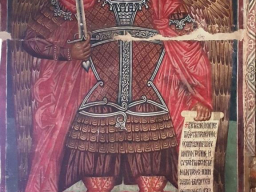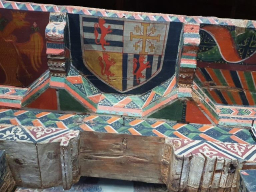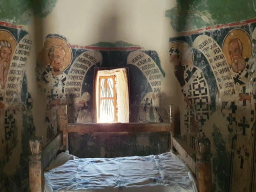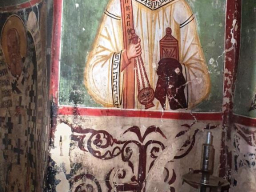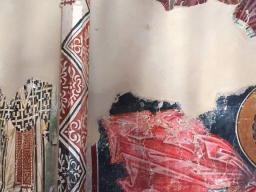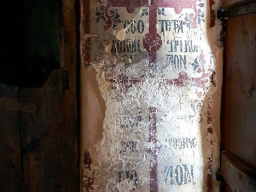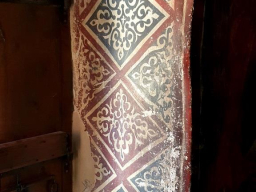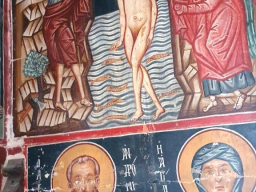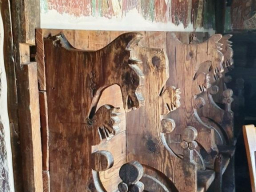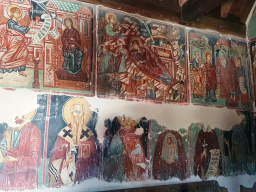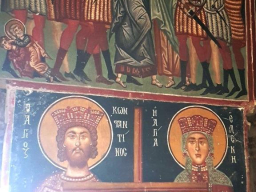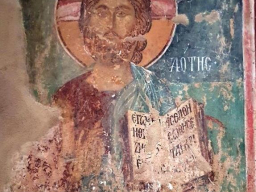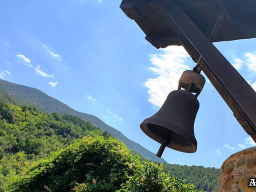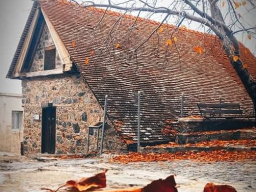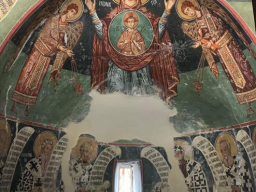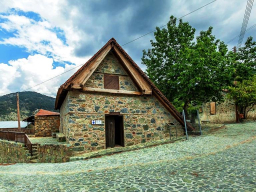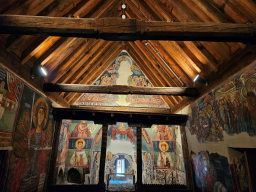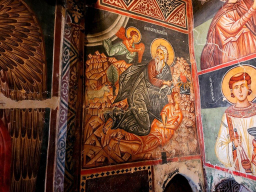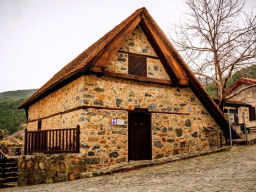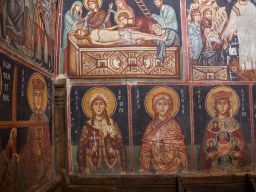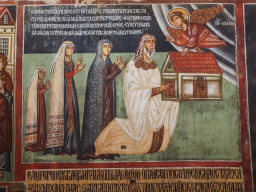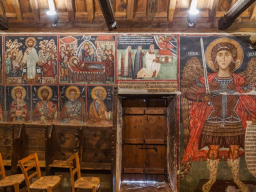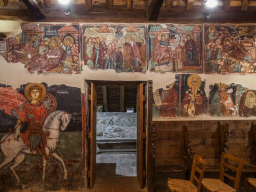The chapel of Archangel Michael is an excellent example of Byzantine and post-Byzantine art in Cyprus.
This chapel was built and frescoed in 1474, funded by the priest Vassilios Chamadou. The priest is depicted above the founder’s inscription, accompanied by his wife and two daughters, offering a model of the church to Archangel Michael. It was painted by a local artist, Mina, who hailed from the Marathasa region, and is fully decorated with unique frescoes depicting scenes from the life of Christ and the Saints, as well as the Festal Cycle of the Orthodox Church.
The architecture of the church follows the traditional Byzantine form of churches in the region, with a single-aisled structure and a sloping roof, characteristic of churches in mountainous areas. The shape of the church is simple and modest, with the apse projecting eastward in a semicircular shape, while the lower part of the apse is integrated into a straight eastern wall. The church has three doors, one on each side of the church (north, west, and south), while the semicircular wall of the apse contains a narrow opening.
The church is fully painted, and the frescoes have been well-preserved despite the damage caused by the erosion of the plaster and the ingress of water, primarily in the areas of the gables. On the western gable, the fresco of the Crucifixion has been damaged by moisture, while on the eastern side, frescoes depicting the Ascension have also been destroyed due to weather conditions. In the apse of the church, the Theotokos is depicted in a posture of supplication, holding Christ on her chest, with Archangels Michael and Gabriel beside her.
The frescoes that remain inside the church are considered to be the work of the same artist who created the icon of Archangel Michael in the arch above the southern door. Mina faithfully follows the tradition of Byzantine art, influenced by the Macedonian School, with strong geometric lines and a simplistic depiction of forms.
The chapel of Archangel Michael, beyond its spiritual value, is a cultural treasure, included in the UNESCO World Heritage List, and stands as an important example of Cypriot Byzantine art and architecture.


